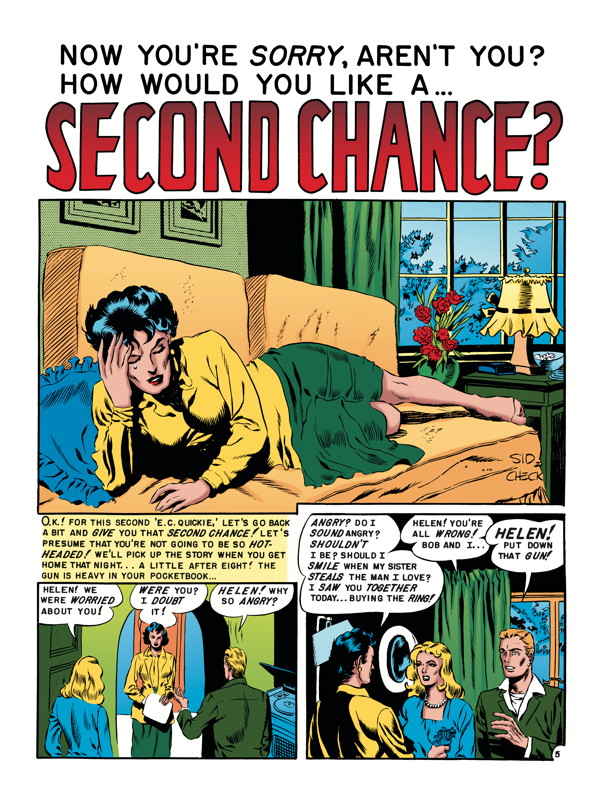
Why spend that money on bags and boards when it could buy me 5-10% more comics? I would pack them as many comics as would fit in the bag to keep them organized and in relatively good shape. As a collector I never went in for one bag and one board per comic, to be honest. I see readers spending hours worshipping at the object - reverently bagging and boarding while a pile of potentially beloved books sits unread. In an age when any image can be possessed at the click of a mouse, collectors spend many times cover price for the cover itself. Variant covers are a symptom of feeding the fetish. The story that came alive began to lose footing to the concern for marks around the staple. The first time a comic was slipped into a plastic bag unread, the medium changed irrevocably. The obsession with making the disposable permanent is the key to where it all went wrong. They were rolled up in the back pocket of a kid in the city or tucked into the rucksack of a soldier heading to war. Even to the degree that some comics have come polybagged.Ĭomic books began as a completely disposable medium, made on cheap newsprint and traded by fans until the books fell apart. There is no more apt phrase than “fetishizing the physical” to describe this fixation on keeping the comic as pristine as possible. We, as fans, have developed an unhealthy attachment to the physical object of comics that is almost unique to this hobby.
#COMIC BOOK COLLECTOR SHOP DISTANCE ARCHIVE#
We archive comics like they were ancient treasures. We recycle most magazines after we read them. Every comic has perceived value, but every magazine doesn’t. Fantastic Four bills itself as “The World’s Greatest Comics Magazine,” but we don’t treat them like magazines.
#COMIC BOOK COLLECTOR SHOP DISTANCE FREE#
A handful of change from the coffee shop doesn’t make a coin collector run for the plastic sleeves, but those Free Comic Book Day comics seem to end up bagged and boarded.Īs I went through the 900 Things project - the process through which I unloaded a significant amount of the material I’d had piling up in my life - I realized how comics have evolved from being a magazine to being a collectible. A stamp or matchbook collector doesn’t keep every single one they see. Collecting Without Curating is AccumulatingĬomics is one of the rare areas of collecting where its adherants worry about the condition of literally every piece they encounter. A pack that had issues of Action Comics, DC Comics Presents, and New Teen Titans meant I could read about more than a dozen DC heroes for a mere 99 cents. As a child of that era, I was able to sample many new characters through the magic of these types of packs. Until the 80s, these were bagged up 2 or 3 for small price and sold at department stores and the like. Even when the product was returnable, the cost of shipping and returning remained.Īlso lost when this market dried up were the piles of remainder stock. With only casual buyers to support that space on the shelf, it stopped being worth it for drug, grocery and corner stores to carry comics. As the direct market expanded, it slowly ate away at newsstand and spinner rack sales. Spinner racks often leave spine marks on comics and those in magazine racks get knocked around and bent. Stores not catering to condition-conscious buyers rarely had mint condition comics. Back issue bins allowed readers to travel backward in a way they rarely could before, but those comics had to be in as close to new condition as possible. With comic shows - and later, shops - came a focus on condition. The comic store became the venue for the serious comic fan. The move away from the comics code-compliant newsstand to the gatekeeper of the comic shop gave us revolutionary titles, such as Swamp Thing, Hellblazer and Watchmen. The key part of this development was the demand for more mature or even adult content. While comic stores had existed since the 1960s, it wasn’t until the 80s that publishers found a market large enough to begin distributing books specifically to what became known as the direct market.

Nothing will ever be that rare and important again. But there are under 100 Action Comics #1s (a nasty side-effect of World War II-era paper recycling), the latest one discovered literally inside the wall of a house. These dreams of the million-dollar comic led to line-ups around the block for The Death of Superman in 1992. You can draw a direct line from the first time there was a headline about the auction of high-value comic (likely Action Comics #1 in the 1970s) and the end of comics on the newsstands.įor every important and valuable comic, there are thousands that belong in 4 for a $1 bins. And just as the first miners sold their played-out stakes to the wave of suckers, those who were there in the early days of comic speculating sold high to late-comers. Since the days of the gold rush, dreamers have run to find their fortune.


 0 kommentar(er)
0 kommentar(er)
